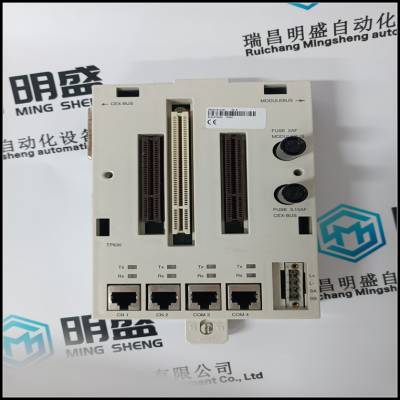产品介绍Product introduction

产品信息产品类别:模块卡件
品牌:DCS、PLC
电话:15270269218
联系人:叶经理
质保期:1年
加工定制:不可定制
产地/厂家:美国
产品实拍图Product picture
您可以通过多种方式组织数据日志文件。一种可能的方法是:
根据日志记录间隔组织日志文件。你也可以
为报警条件强制的条目定义日志文件。例如
您可以按如下方式设置三个数据日志文件:
注意:同一数据日志文件可以支持定时和报警驱动条目。
数据日志1:记录每分钟的电压。使文件变大
足够容纳60个条目,以便您可以查看
回到上一小时的电压读数。
数据日志2:每天记录一次能量。使文件变大
足够容纳31个条目,以便您可以查看
回顾上个月,查看每日能源使用情况。
数据日志3:按异常报告。按异常文件的报告
包含由强制执行的数据日志项
发生报警情况。见上一页
“报警驱动数据日志条目”一节了解更多信息
信息
©2006施耐德电气。版权所有。
PowerLogic®800系列功率表63230-500-22***1
第8章-记录6/2006
102
计费日志
电表存储一个可配置的计费日志,该日志在
10至1440分钟(默认间隔为60分钟)。存储数据
按月、日和以分钟为单位的***间隔。日志包含:
24个月的月度数据和32天的每日数据,但由于
计费日志的内存量为64 KB,即
记录间隔的数量根据寄存器的数量而变化
记录在计费日志中。例如,使用所有寄存器
如表8-6所示,计费日志在60分钟内保存12天的数据
间隔。通过执行以下操作计算此值:
1.计算使用的寄存器总数(见表8-6
关于寄存器的数量,请参见***03页)。在本例中,所有26
使用寄存器。
2.计算用于24个月记录的字节数。
24条记录(26个寄存器x 2字节/寄存器)=1248
3.计算用于32条每日记录的字节数。
32(26 x 2)=1664
4.计算每天使用的字节数。
96(26 x 2)=4992
5.计算记录的60分钟间隔数据的天数
从总日志文件中减去步骤2和3的值
65536字节的大小,然后除以步骤4中的值。
(65536-1248-1664)÷4992=12天
©2006施耐德电气。版权所有。
63230-500-22***1 PowerLogic®800系列功率表
2006年6月第8章——记录
103
配置计费日志记录间隔
计费日志可以配置为每10到1440分钟更新一次。
默认记录间隔为60分钟。要设置日志记录间隔:
您可以使用SMS(有关设置详细信息,请参阅SMS联机帮助)或
可以使用功率计将记录间隔写入寄存器3085
(参见第36页的“读写寄存器”)。
表8-6:计费日志寄存器列表
描述编号
寄存器数据类型➀ 登记号码
开始日期/时间3日/日当前日/日
4 MOD10L4 1700中的实际能量
4 MOD10L4 1704中的无功能量
实际能量输出4 MOD10L4 1708
无功能量输出4 MOD10L4 1712
表观能量总计4 MOD10L4 1724
总PF 1 INT16 1163
3P实际电力需求1 INT16 2151
3P视在功率需求1 INT16 2181
➀ 有关数据类型的更多信息,请参阅附录A。
©2006施耐德电气。版权所有。
PowerLogic®800系列功率表63230-500-22***1
第8章-记录6/2006
104
©2006施耐德电气。版权所有。
63230-500-22***1 PowerLogic®800系列功率表
6/2006第9章-波形捕获
105
第9章-波形捕获
介绍
本节介绍了
以下功率表型号:
•PM850
•PM870
波形捕获特征汇总见表9-1。
表9-1:按模型的波形捕获汇总
PM850和PM870的波形捕获功能
波形捕获数5 5
波形启动:
手工
警报
9
9
9
9
每个周期的样本数128可配置*
通道(1至6)可配置可配置*
周期3可配置*
预循环1可配置*
*参见***06页图9-1。
©2006施耐德电气。版权所有。
PowerLogic®800系列功率表63230-500-22***1
第9章-波形捕获6/2006
106
波形捕获
波形捕获可以手动启动,也可以通过报警触发器启动
以分析稳态或扰动事件。这个波形
提供有关单个谐波的信息,其中SMS
通过第63次谐波计算。它还计算总数
谐波失真(THD)和其他电能质量参数。
注:PM870中提供干扰波形捕获
只有
在PM850中,波形捕获记录了五个单独的
三次循环捕获,每个循环同时捕获128个样本
六个计量信道(参见***07页的“SMS中的信道选择”)。
在PM870中,有一到五个波形捕获范围,但
捕获的循环数根据以下情况而变化:
每个周期的样本数和SMS中选择的信道数。使用
图9-1确定循环次数上限
You can organize data log files in many ways. One possible way is to
organize log files according to the logging interval. You might also
define a log file for entries forced by alarm conditions. For example,
you could set up three data log files as follows:
NOTE: The same data log file can support both scheduled and alarmdriven entries.
Data Log 1: Log voltage every minute. Make the file large
enough to hold 60 entries so that you could look
back over the last hour’s voltage readings.
Data Log 2: Log energy once every day. Make the file large
enough to hold 31 entries so that you could look
back over the last month and see daily energy use.
Data Log 3: Report by exception. The report by exception file
contains data log entries that are forced by the
occurrence of an alarm condition. See the previous
section “Alarm-driven Data Log Entries” for more
information.
© 2006 Schneider Electric. All Rights Reserved.
PowerLogic® Series 800 Power Meter 63230-500-22***1
Chapter 8—Logging 6/2006
102
Billing Log
The Power Meter stores a configurable billing log that updates every
10 to 1,440 minutes (the default interval 60 minutes). Data is stored
by month, day, and the specified interval in minutes. The log contains
24 months of monthly data and 32 days of daily data, but because the
maximum amount of memory for the billing log is 64 KB, the number
of recorded intervals varies based on the number of registers
recorded in the billing log. For example, using all of the registers
listed in Table 8–6, the billing log holds 12 days of data at 60-minute
intervals. This value is calculated by doing the following:
1. Calculate the total number of registers used (see Table 8–6
on page 103 for the number of registers). In this example, all 26
registers are used.
2. Calculate the number of bytes used for the 24 monthly records.
24 records (26 registers x 2 bytes/register) = 1,248
3. Calculate the number of bytes used for the 32 daily records.
32 (26 x 2) = 1,664
4. Calculate the number of bytes used each day.
96 (26 x 2) = 4,992
5. Calculate the number of days of 60-minute interval data recorded
by subtracting the values from steps 2 and 3 from the total log file
size of 65,536 bytes and then dividing by the value in step 4.
(65,536 – 1,248 – 1,664) ÷ 4,992 = 12 days
© 2006 Schneider Electric. All Rights Reserved.
63230-500-22***1 PowerLogic® Series 800 Power Meter
6/2006 Chapter 8—Logging
103
Configure the Billing Log Logging Interval
The billing log can be configured to update every 10 to 1,440 minutes.
The default logging interval is 60 minutes. To set the logging interval
you can use SMS (see the SMS online Help for setup details) or you
can use the power meter to write the logging interval to register 3085
(see “Read and Write Registers” on page 36).
Table 8–6: Billing Log Register List
Description Number of
Registers Data Type➀ Register Number
Start Date/Time 3 D/T Current D/T
Real Energy In 4 MOD10L4 1700
Reactive Energy In 4 MOD10L4 1704
Real Energy Out 4 MOD10L4 1708
Reactive Energy Out 4 MOD10L4 1712
Apparent Energy Total 4 MOD10L4 1724
Total PF 1 INT16 1163
3P Real Power Demand 1 INT16 2151
3P Apparent Power Demand 1 INT16 2181
➀ Refer to Appendix A for more information about data types.
© 2006 Schneider Electric. All Rights Reserved.
PowerLogic® Series 800 Power Meter 63230-500-22***1
Chapter 8—Logging 6/2006
104
© 2006 Schneider Electric. All Rights Reserved.
63230-500-22***1 PowerLogic® Series 800 Power Meter
6/2006 Chapter 9—Waveform Capture
105
CHAPTER 9—WAVEFORM CAPTURE
Introduction
This section explains the waveform capture capabilities of the
following Power Meter models:
• PM850
• PM870
See Table 9–1 for a summary of waveform capture features.
Table 9–1: Waveform capture summary by model
Waveform Capture Feature PM850 PM870
Number of waveform captures 5 5
Waveform initiated:
Manually
By alarm
9
9
9
9
Samples per cycle 128 Configurable*
Channels (1 to 6) Configurable Configurable*
Cycles 3 Configurable*
Precycles 1 Configurable*
* See Figure 9–1 on page 106.
© 2006 Schneider Electric. All Rights Reserved.
PowerLogic® Series 800 Power Meter 63230-500-22***1
Chapter 9—Waveform Capture 6/2006
106
Waveform Capture
A waveform capture can be initiated manually or by an alarm trigger
to analyze steady-state or disturbance events. This waveform
provides information about individual harmonics, which SMS
calculates through the 63rd harmonic. It also calculates total
harmonic distortion (THD) and other power quality parameters.
NOTE: Disturbance waveform captures are available in the PM870
only.
In the PM850, the waveform capture records five individual
three-cycle captures at 128 samples per cycle simultaneously on all
six metered channels (see “Channel Selection in SMS” on page 107).
In the PM870, there is a range of one to five waveform captures, but
the number of cycles captured varies based on the number of
samples per cycle and the number of channels selected in SMS. Use
Figure 9–1 to determine the number of cycles captured.
NOTE: The number of cycles shown above are the total number of
cycles allowed (pre-event cycles + event cycles = total cycles).
Figure 9–1: PM870 Number of Cycles Captured
6
5
4
3
2
1
30
35
45
60
90
185
15
15
20
30
45
90
16 32 64 128
7
9
10
15
20
45
3
4
5
7
10
20
Number
of
Channels
Number of Samples per Cycle
PLSD110333
© 2006 Schneider Electric. All Rights Reserved.
63230-500-22***1 PowerLogic® Series 800 Power Meter
6/2006 Chapter 9—Waveform Capture
107
Initiating a Waveform
Using SMS from a remote PC, initiate a waveform capture manually
by selecting the power meter and issuing the acquire command. SMS
will automatically retrieve the waveform capture from the power
meter. You can display the waveform for all three phases, or zoom in
on a single waveform, which includes a data block with extensive
harmonic data. See the SMS online help for instructions.
Waveform Storage
The power meter can store multiple captured waveforms in its
nonvolatile memory. The number of waveforms stored is based on
the number selected. There are a maximum of five stored waveforms.
All stored waveform data is retained on power-loss.
Waveform Storage Modes
There are two ways to store waveform captures: “FIFO” and “Fill and
Hold.” FIFO mode allows the file to fill up the waveform capture file.
After the file is full, the oldest waveform capture is removed, and the
most recent waveform capture is added to the file. The Fill and Hold
mode fills the file until the configured number of waveform captures is
reached. New waveform captures cannot be added until the file is
cleared.
How the Power Meter Captures an Event
When the power meter senses the trigger—that is, when the digital
input transitions from OFF to ON, or an alarm condition is met—the
power meter transfers the cycle data from its data buffer into the
memory allocated for event captures.
 DSQC236C工控继电模块PLC库存
¥6973.00
DSQC236C工控继电模块PLC库存
¥6973.00
 DSQC236D 工控继电模块PLC库存
¥6973.00
DSQC236D 工控继电模块PLC库存
¥6973.00
 DSQC236G工控继电模块PLC库存
¥6973.00
DSQC236G工控继电模块PLC库存
¥6973.00
 DSQC236H工控继电模块PLC库存
¥6973.00
DSQC236H工控继电模块PLC库存
¥6973.00
 DSQC236K工控继电模块PLC库存
¥6973.00
DSQC236K工控继电模块PLC库存
¥6973.00
 DSQC236P工控继电模块PLC库存
¥6973.00
DSQC236P工控继电模块PLC库存
¥6973.00




